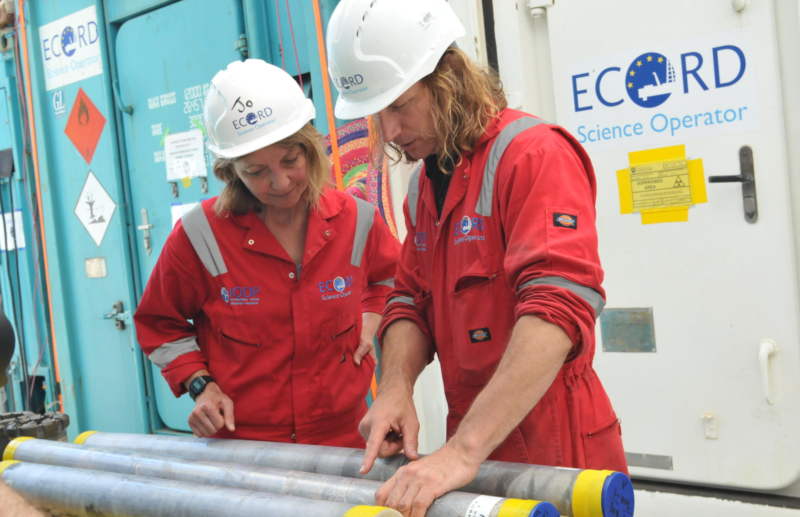Story from KUT. We speak with one of the principal researchers on the expedition after the story.
When a team of researchers left Austin on a scientific expedition to drill deep into an ancient mountain range, fans of weird fiction perked up their ears.
The plot sounded eerily familiar to the story “At the Mountains of Madness” by H.P. Lovecraft. It’s a tale about an academic team that visits an ancient mountain range, drills deep into the ground, and awakens a race of aliens – known as “the Old Ones” – who lived on Earth eons before even the dinosaurs.
“We did two different Reddits – AMAs, Ask Me Anythings – and both times we got questions that sounded a lot like that,” said UT Geophysicist Sean Gulick, one of the leaders of the expedition. “’Are you going to awake a sleeping alien god?’ Or, ‘If you do, will you admit responsibility?’”
“We, of course, said we would,” he added with a laugh.
For the record, they did not rouse the Old Ones. But they did find something awe inspiring: granite.
“When we first drilled it, and granite came up out of the center of this thing that had to come from super deep. And the granite was so damaged, we were like ‘Wow this is an incredible find,” he said.
To understand why, you need to know a little background about the mountains Gulick was drilling.
Over 65 million years ago, an asteroid smashed into earth and brought an apocalypse. The aftermath of impact wiped out the dinosaurs and set the stage for man to evolve. The impact itself also created a ring of mountains close to the center of the crater.
That range is now buried deep underground, off the coast of the Yucatan Peninsula, it is there where the team drilled. The fact that they found granite seems to confirm a theory about how the mountains were formed.
Texas Standard spoke more with Geophysicist Sean Gulick about the expedition.
“One of the biggest surprises was we drilled into a ring of mountains surrounding the center of the impact, which are present at all large impacts … and no one has ever sampled one,” Gulick says. “We had no idea what it would be made of. … When we first drilled into it, we could see right through the liner of the drill core was pink granite. We were shocked.”
What you’ll hear from this interview:
– Why finding pink granite was surprising
– How large the asteroid was that hit the earth 66 million years ago
– What happened to the earth after the asteroid hit
– The next steps after drilling















